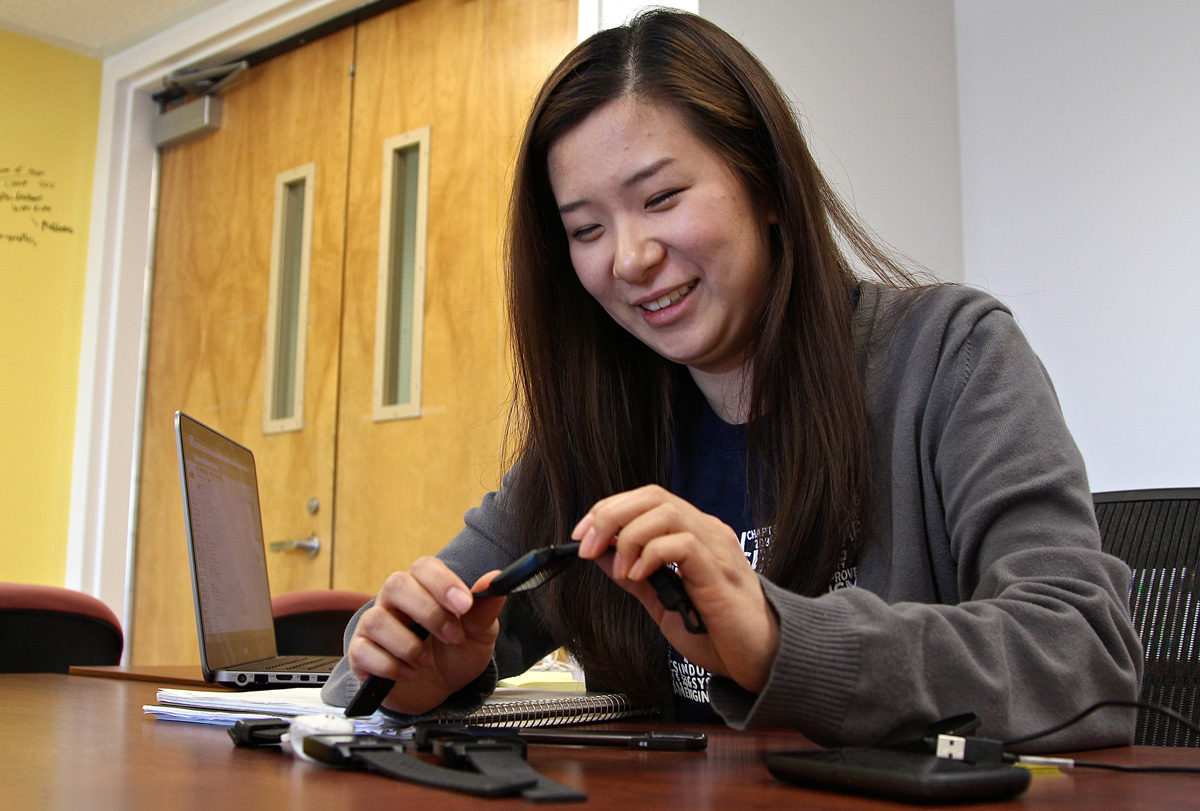
Photo: Lauren Hernandez, ’15 Journalism
Exactly how much stress do you feel on the job?
Kelli Sum, ’16 Industrial and Systems Engineering, and Assistant Professor Dan Nathan-Roberts are tackling this question as part of their work in the SJSU Undergraduate Research Grants Program.
The program, which gives student-faculty teams the opportunity to collaborate, provided the pair a $1,000 grant toward their project regarding quantifying workload with wearable technology.
“I was always interested in fitness trackers and how it let me understand how much I moved that day,” Sum said. “I brought up that idea to Dr. Nathan-Roberts and was talking about my research interests and we were able to find a way to use this human factors application as research.”
Sum’s initial idea was founded on how fitness trackers can be used as motivation to improve a person’s health, but she realized upon consulting her professor how the same technology could lend itself to tracking and managing the workload of nurses, athletes and even soldiers.
“My goal is to hopefully solidify that foundation and use these [trackers] for many different people to quantify how hard they’re working,” Sum said.
Sum is conducting preliminary research with the help of her colleagues in the USERlab (User Systems Engineering Research Laboratory), a group of undergraduate and graduate students collaborating on research projects under the guidance of Professor Nathan-Roberts.
Photo: Lauren Hernandez, ’15 Journalism
Armed with Basis Peak fitness trackers for a week at a time, Sum’s colleagues have tracked their heart rate, skin temperature, Galvanic skin response (the skin’s electric activity), number of calories burned and number of steps taken.
After a week of tracking, Sum downloads the device’s collected data, drops it into an Excel worksheet and analyzes the information.
“What it will have is minute-by-minute reporting,” Sum said. “I basically have a line graph looking at the heart rate and other factors over time and we try putting all this information into a graph so we can understand the trends.”
The peaks in the graph indicate when a person is working hardest, and perhaps experiencing the most stress. That knowledge may one day help nurses, soldiers and others moderate their activities so they are more effective over the long run.
For now, Sum is testing the concept on fellow students.
Michael Cataldo, ’17 Industrial and Systems Engineering, said his one-week pilot with the tracker was telling of the technology’s benefits.
“I’m getting more and more into fitness, so it can tell me if I need to push myself further or ‘hey your heart beat is too high, you need to slow down,’” Cataldo said.
Cataldo said his involvement in Sum’s research and collaboration with Professor Nathan-Roberts has cultivated a culture of sharing ideas.
“I think that I’m lucky to get to work with a number of students that have a lot of passion in the same area that I do, which is improving health and health care,” Nathan-Roberts said. “It’s aligning our research interests together and finding places where my expertise could help identify what is missing in the research or if there are opportunities for us to further study.”
As Sum nears the end of the preliminary data collection period, she hopes to collaborate with the SJSU Valley Foundation School of Nursing to pair nursing students with trackers in an attempt to understand how the body works in various environments.
